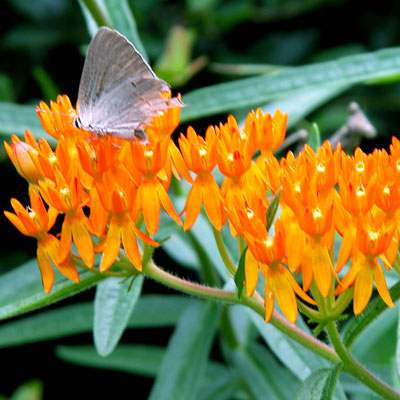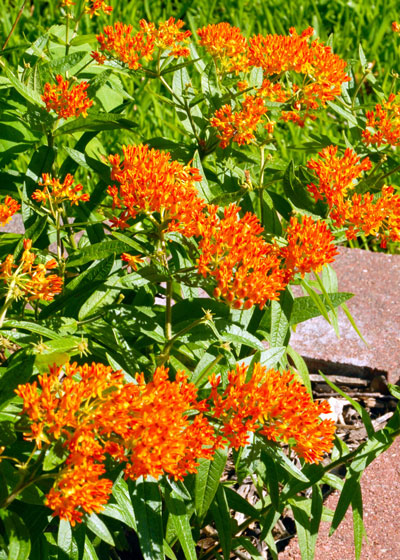Plant of the Week: Butterfly Weed
I bought my first butterfly weed at a nursery in Mt. Pleasant, Texas, in spring 1972. Some of my plant purchases, don’t you see, are more memorable than others. I love this plant.

Photo: Butterflies get the word out that this plant has arrived. They flock from all around!
Horticulturists (at least this one) get so busy in the spring that we don’t get to do normal tourist things like travel our state. I’d lived in Texas, yet I wasn’t aware that this plant is not only a treasured garden perennial, but it’s also a fabulous East Texas wildflower. It blooms in early April. I know, because I got sent on a photo assignment to Tyler for the Azalea Trails, and the butterfly weeds were in bloom along their city’s roadsides.
Then we traveled to see the in-laws in Ohio one July, and there they were again. Blooming in profusion in empty farm fields all over Pickaway County. It seemed for a while that everywhere I went, there it was!

Photo: Planting of butterfly weed blooms beautifully for several weeks each spring.
So here are the facts on this magical little flower.
• It’s a milkweed! Yep. Asclepias tuberosa. And that explains why the butterflies love it, both for nectar and probably for feeding.
• It’s much more refined than the common weedy milkweed. Butterfly weed grows to be about the size of a basketball. The tiny flowers are borne along elongated clusters that are 4 to 6 inches long. Fruits that form are typical one-seamed pods, just like all the other plants in the big milkweed family.
• As a garden flower it prefers to remain undisturbed in highly organic, well-draining soil. It blooms best with morning sun and a bit of protection from the hottest mid-afternoon sun in the summer.
• As its species name suggests, it produces a tuber, but that’s not the way you’d want to try starting it. It actually transplants with some difficulty. It’s better to buy plants that have been grown in a nursery or greenhouse, then potted and sold to you in their containers.
• Spider mites may end up on it, but they won’t kill the plant. In fact, few insect or disease problems ever stop by. That’s a good thing, because you wouldn’t want to be spraying a plant you were using to attract butterflies.
• Will every nursery have this in stock? No, not at all. In fact, call ahead to see if they can even order it in for you. It’s always best to buy locally whenever you can, but if you simply can’t find it, Plant Delights Nursery in North Carolina offers it online.
